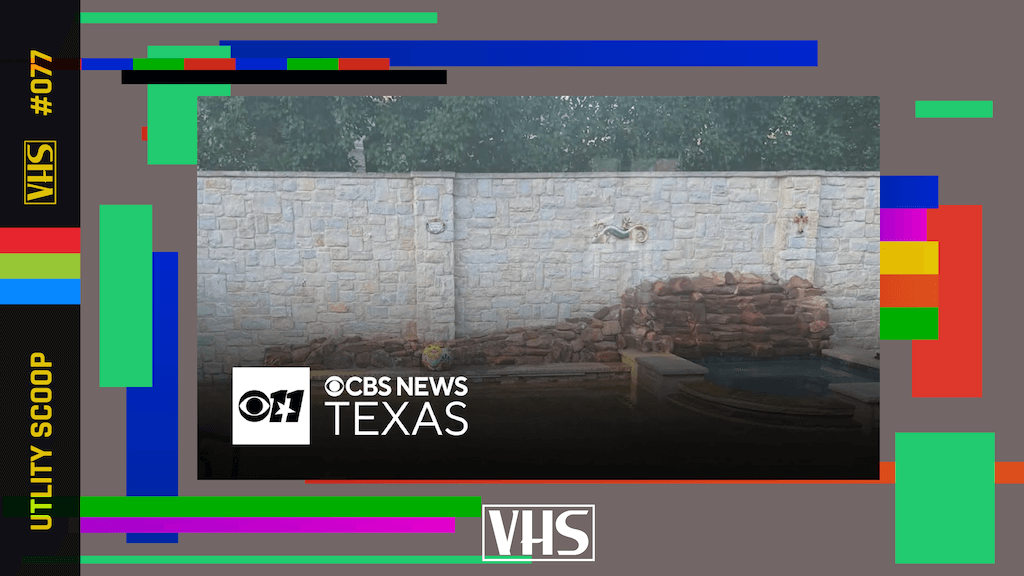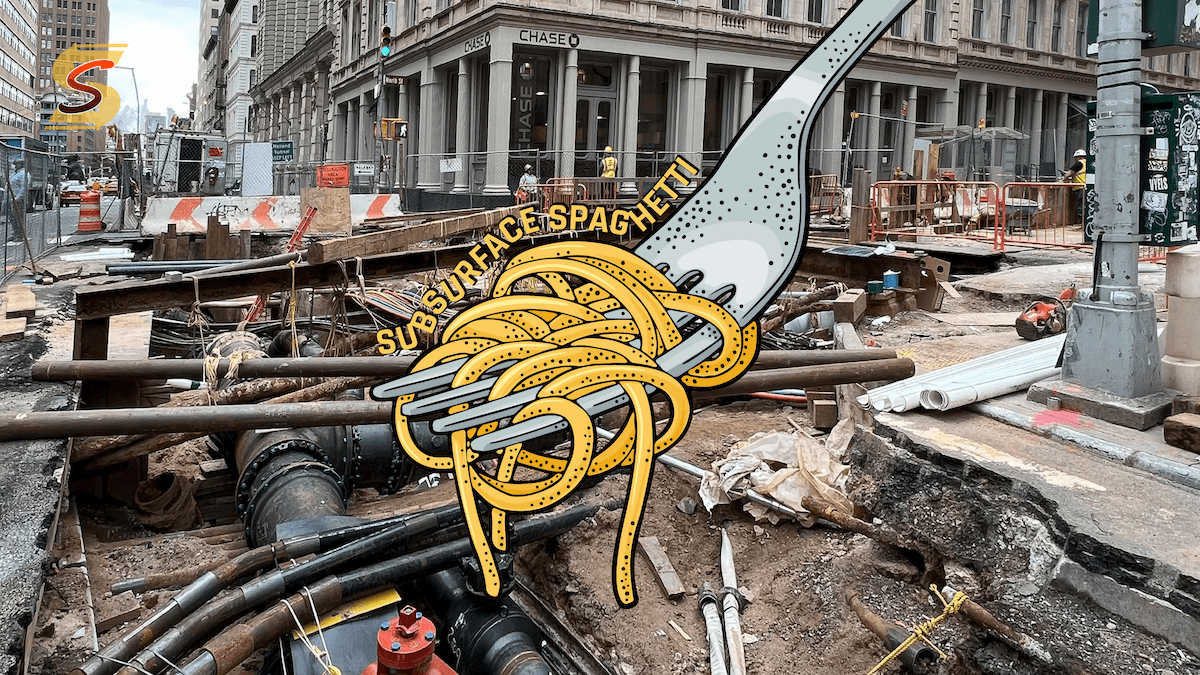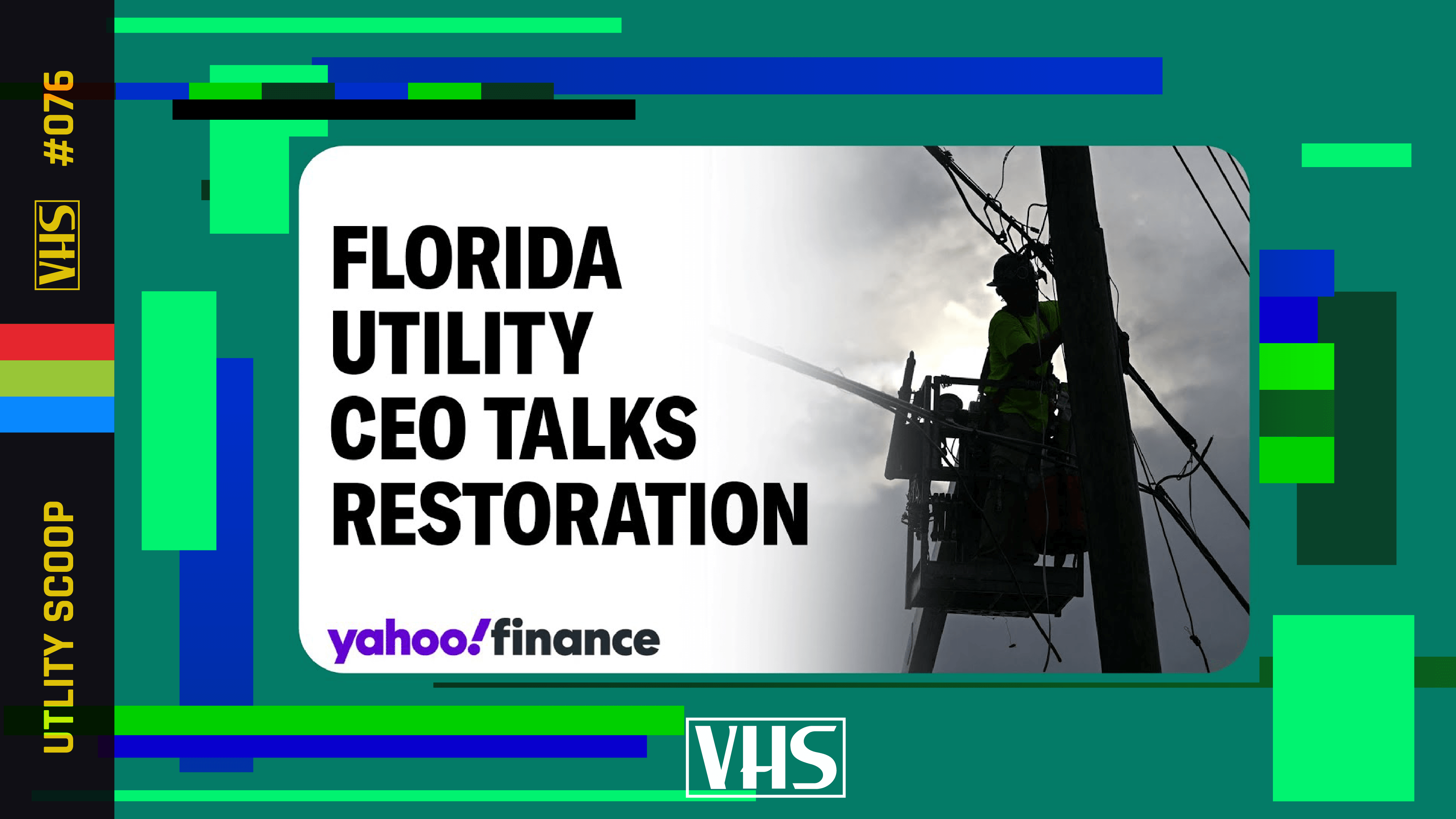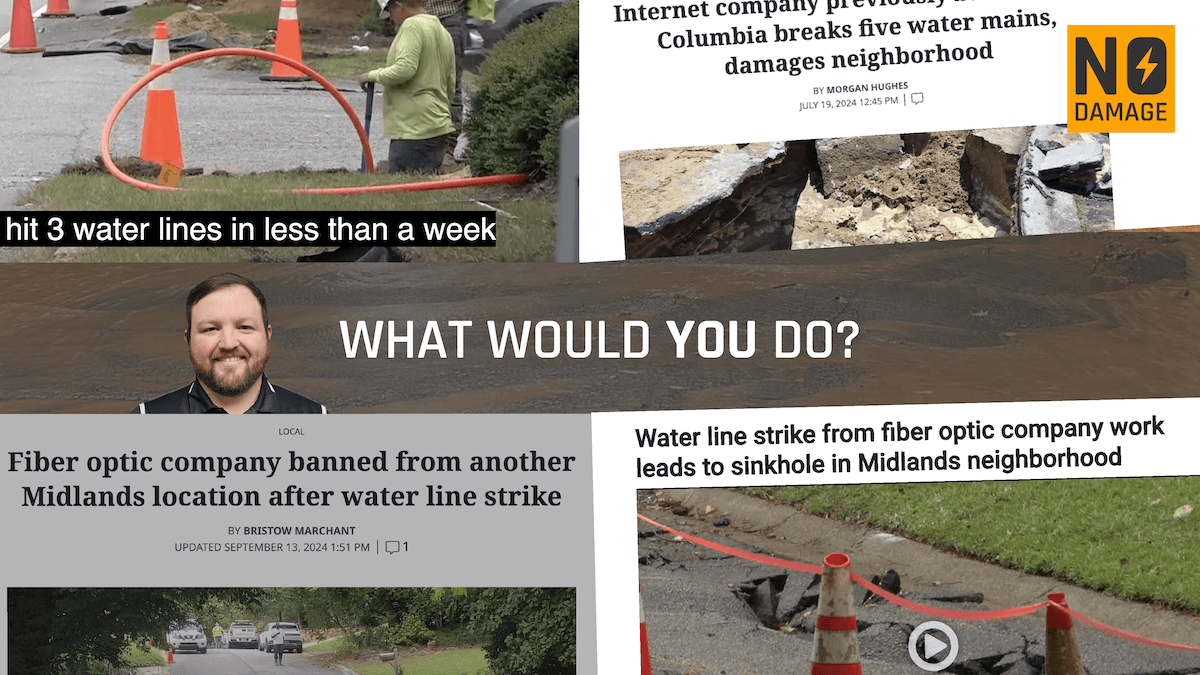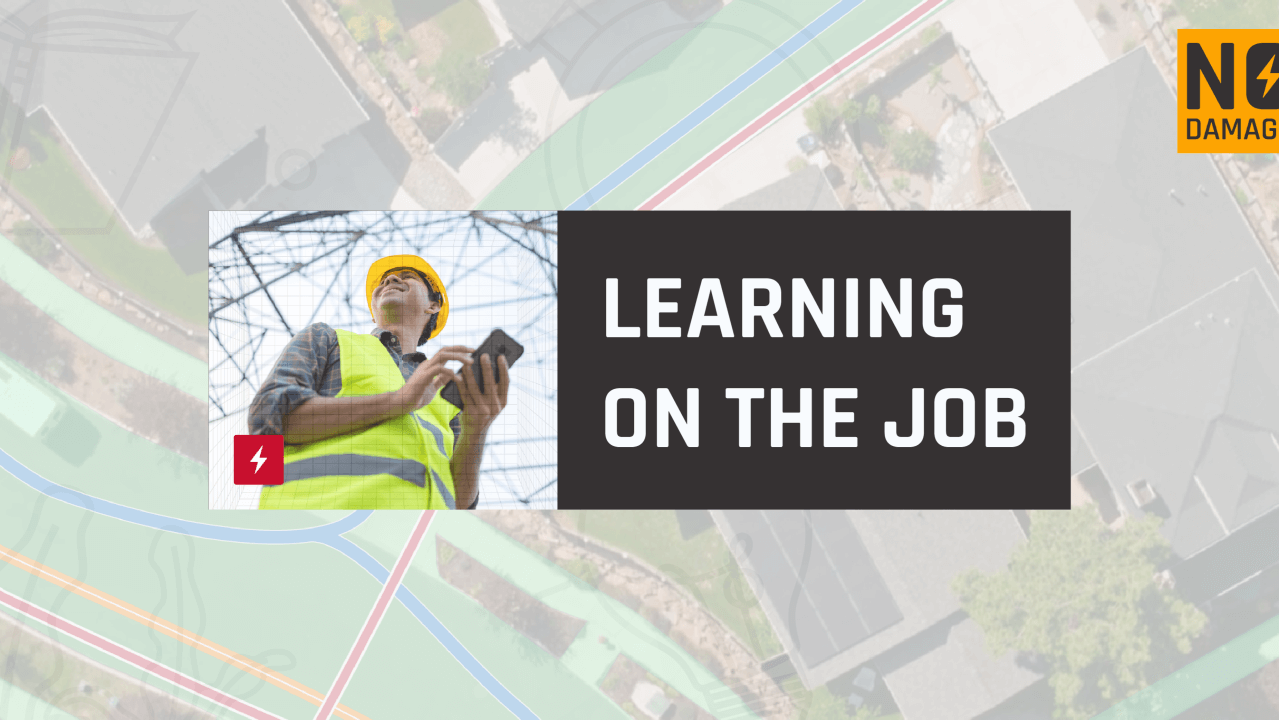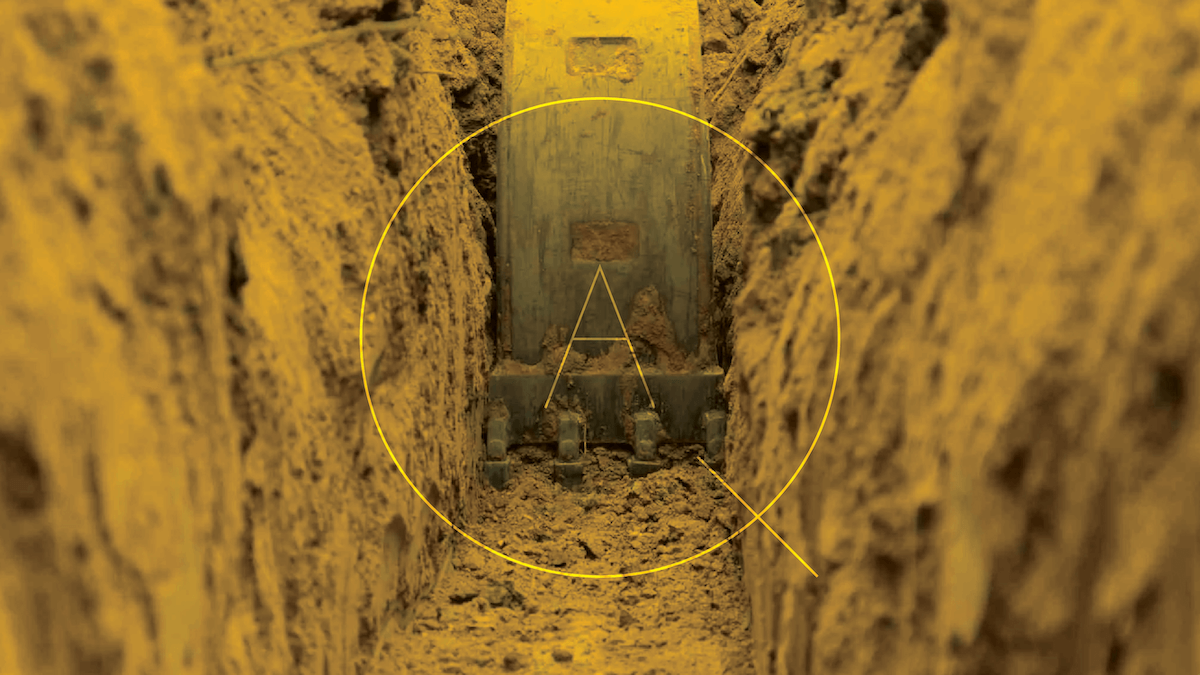
Digging near utilities requires careful consideration to ensure safety and prevent damage. Here are the list of questions we'll be answering:
- How should you approach digging around utilities?
- How can you determine what lies below without digging?
- How accurate are utility markings?
- How deep can you go before calling 811?
- What are the potential consequences of digging without contacting 811?
- What precautions should be taken when digging around gas lines?
- How can I identify different types of utility markings?
- How can I use technology to help me dig more safely?
Here are answers to some frequently asked questions regarding this matter:
HOW SHOULD YOU APPROACH DIGGING AROUND UTILITIES?
When digging around utilities, it is crucial to use the appropriate tools and methods. Vacuum excavation is one of the most empahsized recommendations that the CGA repeats every year, it minimizes the risk of damaging underground utilities. Non-invasive techniques use pressurized water or air to break up soil, which can then be safely removed.
Carefully examine the utility markings on the ground. Understand the meaning of each color used for different types of utilities (e.g., gas, water, electric) and their corresponding symbols. Familiarize yourself with any additional information provided on the markings, such as depth indications.
Based on the utility markings, plan the specific area where you intend to dig. Ensure that your excavation falls within the tolerance zone, which is the predetermined distance from the marked utility lines. Consider the depth and width of the excavation, keeping it as small as possible to minimize the risk of accidental utility damage.
Maintain clear communication among all team members involved in the digging process. Ensure everyone understands the potential risks, safety procedures, and emergency protocols. Document the process, including photographs, noting any changes or observations made during the excavation. Report any issues or concerns to the utility locating service or relevant authorities as necessary.
Remember, safety should be the top priority when digging around utilities. By following proper procedures, respecting utility markings, using appropriate tools and techniques, and staying vigilant throughout the process, you can help minimize the risk of accidents, utility damage, and personal injury.
HOW CAN YOU DETERMINE WHAT LIES BELOW WITHOUT DIGGING?
Determining what lies beneath without digging can be challenging, but there are several non-invasive methods and technologies that can help provide valuable information about what is beneath the surface. Here are some approaches:
-
Ground Penetrating Radar (GPR): GPR is a useful method for locating both metallic and non-metallic objects underground. It uses electromagnetic waves to create images of subsurface structures, helping identify buried utility lines. However, GPR equipment can be larger, more expensive, and require specialized training.
-
Sonic Surveying: Sonic surveying involves injecting sound or ultrasonic waves into the ground to trace plastic water pipes. While it can be effective for locating plastic water pipes, it may not work for other types of buried services.
-
Dowsing: Dowsing is an ancient technique that involves using a hazel twig or similar tool to locate underground objects. Its effectiveness is highly debated but it's still used by some locators.
-
Electromagnetic Location: Electromagnetic location is a widely used method for locating buried pipes, cables, and sewers. It relies on detecting the electromagnetic fields emitted by metallic lines. However, it cannot locate non-metallic lines like plastic pipes. To address this limitation, some utilities use tracer wires along with plastic pipes to enable electromagnetic location.
It's important to note that the effectiveness of these techniques may vary depending on various factors such as soil conditions, depth of the utilities, and the specific equipment used. It's recommended to consult with professionals who specialize in utility locating to determine the most suitable method for a specific situation.
HOW ACCURATE ARE UTILITY MARKINGS?
While utility markings on the ground provide valuable guidance, they do not guarantee exact placement. It is important to seek professional verification before commencing any underground excavation work. In addition you should be cognizant of the tolerance zone.
The tolerance zone refers to a predetermined horizontal distance surrounding an underground line or pipe. Most states use either 18 inches or 24 inches, while North Carolina uses 30 inches. To calculate the total size of the tolerance zone, you need to consider the state's guidelines and the diameter of the line or pipe. For instance, a two-inch pipe in a state with an 18-inch tolerance zone would have a total tolerance zone area of 38 inches (18 inches on each side plus the two-inch diameter of the pipe).
HOW DEEP CAN YOU DIG BEFORE CALLING 811?
It is recommended to call 811 or the local utility locating service before digging when the depth of the excavation is greater than a certain threshold, which can vary depending on the country or region. In the United States, the common guideline is to contact 811 for utility locating services if the excavation depth is expected to be greater than 12 inches (30 centimeters).
However, it's important to note that the specific requirements can vary among states and utility providers, so it's always best to check the guidelines and regulations in your specific location. Contacting 811 or the local utility locating service is the safest approach to ensure that underground utilities are properly marked and to prevent accidental damage or disruption to utility lines during excavation. They can provide the necessary information and help coordinate the process to ensure the safety of the dig and surrounding infrastructure.
WHAT ARE THE POTENTIAL CONSEQUENCES OF DIGGING WITHOUT CONTACTING 811?
Digging without contacting 811 or the local utility locating service can lead to various potential consequences, including:
-
Personal Injury: Unmarked or improperly located underground utility lines can pose a serious safety hazard. Digging without knowing the precise location of utilities increases the risk of accidental contact, which can result in personal injury or even fatality. Utility lines can carry electricity, gas, water, or communication services, and accidentally hitting them can lead to electric shocks, explosions, or other dangerous situations.
-
Property Damage: Excavating without proper utility marking can result in damage to underground infrastructure. Hitting utility lines can cause leaks, disruptions in service, or costly repairs. Damage to utility lines may also impact neighboring properties, leading to inconvenience and potential liability.
-
Service Disruption: Accidentally damaging utility lines can cause disruptions in essential services. Cutting a water or gas line, for example, can result in service outages not only for the immediate area but also for neighboring properties or even an entire community. This can lead to inconvenience, loss of productivity, and potential financial repercussions.
-
Legal and Financial Consequences: Digging without following proper procedures and damaging utility lines can have legal and financial implications. You may be held liable for the costs of repairing the damage and potentially face fines or penalties for violating local laws and regulations. Additionally, insurance coverage may be affected, and you could be responsible for any resulting damages or injuries.
-
Environmental Impact: Disturbing underground utility lines can have environmental consequences, such as contamination if a chemical pipeline is ruptured. Spills, leaks, or releases of hazardous substances can harm the environment, wildlife, and ecosystems.
To avoid these potential consequences, it is crucial to contact 811 or the local utility locating service before any excavation or digging work. They will assist in identifying and marking the location of underground utilities, ensuring safe excavation practices, and minimizing the risk of accidents, damage, or service disruptions.
WHAT PRECAUTIONS SHOULD BE TAKEN WHEN DIGGING NEAR GAS LINES?
When digging near gas lines, it is essential to take specific precautions to ensure safety. Here are some important precautions to consider:
-
Contact 811: Before starting any excavation work, contact your local utility locating service, typically by calling 811, to request the marking and location of underground gas lines. This service will send a representative to mark the location of the gas lines on the ground.
-
Respect the Markings: Once the gas lines have been marked, it is crucial to respect and not disturb the markings. These markings indicate the approximate location of the gas lines and help prevent accidental damage. Avoid digging within the designated tolerance zone around the marked lines.
-
Hand Digging or Non-Invasive Methods: Consider using hand tools or non-invasive techniques, such as hydro excavation or vacuum excavation, near gas lines. Hand digging allows for careful and controlled excavation, minimizing the risk of accidental damage to the lines. Non-invasive methods use pressurized water or air to break up soil, which can be safely vacuumed away.
-
Excavation Equipment Awareness: If using mechanical excavation equipment near gas lines, ensure that operators are trained and experienced in working near utilities. Be aware of the depth and location of the gas lines, and exercise caution to avoid accidental contact. The use of appropriate excavation techniques and equipment can help reduce the risk of damaging the lines.
-
Gas Line Identification and Shutoff: Locate and identify any above-ground gas line equipment, such as valves or meters, in the vicinity of the excavation site. Be aware of their locations to avoid accidental damage during excavation. If necessary, know the procedure for shutting off the gas supply in case of an emergency or accidental damage.
-
Monitoring for Gas Odor: Familiarize yourself with the distinct odor of natural gas, which is often described as a rotten egg smell. If you detect a gas odor or suspect a gas leak during excavation, stop work immediately, evacuate the area, and notify the gas utility company or emergency services from a safe location.
-
Contractor and Professional Assistance: If the excavation work is extensive or complex, consider engaging the services of licensed contractors or professionals experienced in working near gas lines. They will have the knowledge, expertise, and equipment necessary to carry out the work safely and in compliance with applicable regulations.
Remember, safety is paramount when working near gas lines. Taking the necessary precautions, following local regulations and guidelines, and seeking professional assistance will help ensure the safety of workers, prevent accidents, and avoid damage to gas lines.
HOW CAN I IDENTIFY DIFFERENT TYPES OF UTILITY MARKINGS?
There are 8 assigned colors denoting underground utilities described in Safety Color Code Z535. These colors cover the general categories of underground utilities, but they are only part of the equation. Notations are also necessary to keep track of the locations, widths and depths of conduits, cables and pipes and identify the associated utility company.
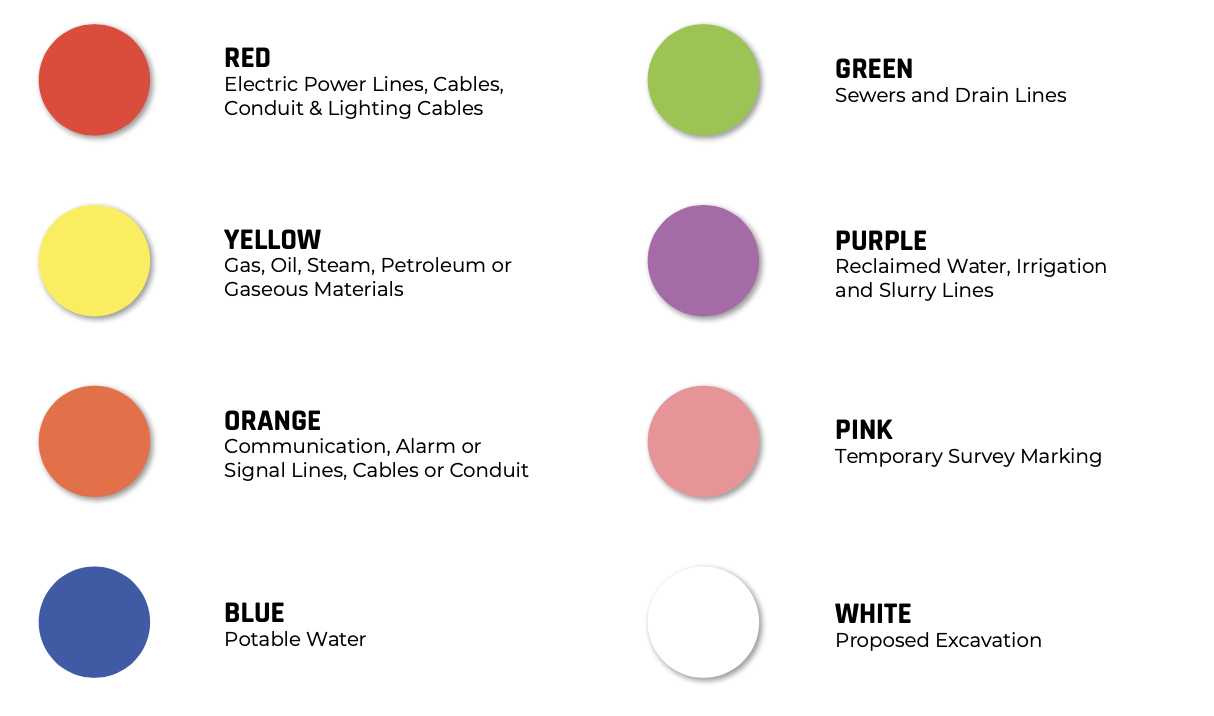
HOW CAN I USE TECHNOLOGY TO HELP ME DIG MORE SAFELY?
Technology can play a significant role in helping you dig safer around utilities. Here are some ways technology can assist you:
-
Apps / Software: One Call Centers have their own portals where you can submit locates and receive dig information, in addition apps like UExcavate enable excavators to coordinate locate and dig validities and ticket management systems like Utilocate allow for locate ticket management with GIS integration and data analysis
-
Ground-Penetrating Radar (GPR): GPR technology uses electromagnetic waves to create subsurface images. Portable GPR systems can help detect the presence and location of underground utilities, even non-metallic ones. By using GPR equipment, you can get a visual representation of the subsurface, assisting in planning safer digging areas.
-
Utility Locators: Utilizing modern utility locating equipment can improve the accuracy and efficiency of identifying underground utilities. These devices use electromagnetic or acoustic methods to detect and locate buried utilities. They can help you precisely identify the location and depth of underground lines before digging.
-
Augmented Reality (AR) and Virtual Reality (VR): AR and VR technologies can provide virtual visualizations of underground utilities based on existing mapping data. By using AR or VR headsets or mobile apps, you can "see" underground infrastructure overlaid on your physical environment. This visualization can assist in planning and executing safer digging operations.
-
Drone Surveys: Drones equipped with advanced imaging technology, such as LiDAR or thermal cameras, can assist in utility inspection and mapping. They can capture aerial images or collect data about the subsurface, helping identify underground utilities and potential hazards before excavation.
-
Geographic Information Systems (GIS): GIS technology integrates geographical data with utility information, allowing for spatial analysis and visualization of underground utilities. By using GIS software like ESRI, you can overlay utility data on maps, analyze potential conflicts, and plan safer excavation paths.
-
Remote Sensing: Remote sensing techniques, such as satellite imagery or aerial photography, can provide valuable information about surface features that may indicate the presence of buried utilities. Analyzing these images can help identify potential risks and plan safer excavation areas.
When using technology to dig safer around utilities, it's essential to consider the limitations and accuracy of the tools you're using. Consulting with professionals or utility companies experienced in using these technologies can provide further guidance and ensure the most effective and safe use of the available tools.
Share this Post


